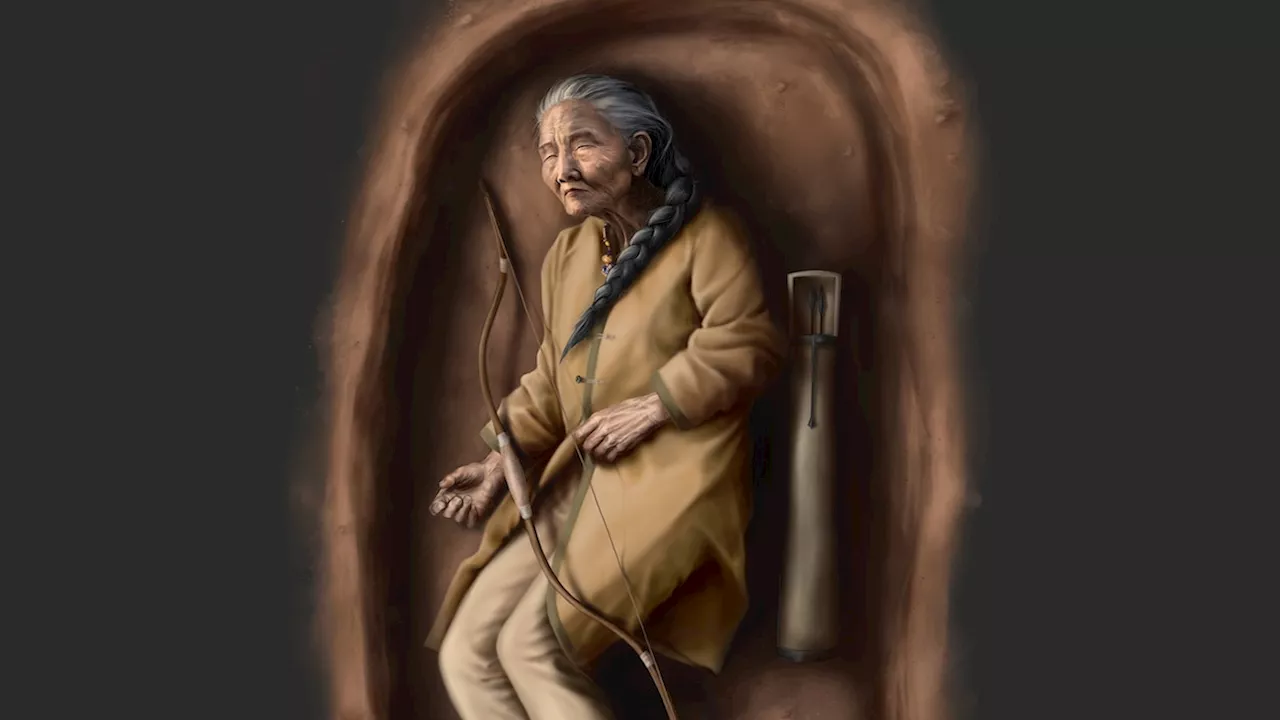New research on a 10th-century grave in Hungary suggests that women might have played a more active role in warfare than previously thought. The discovery of a female skeleton buried with a bow and other archery artifacts challenges traditional interpretations of women's roles in ancient societies.
Recent scientific reevaluations of remains have historians rethinking the prevalence of women fighters throughout history. In an ancient cemetery in Sárrétudvari, Hungary, archaeologists have identified the remains of an elderly woman from the 10th century who was interred with a bow and other archery artifacts. In the 1980s, a collection of artifacts turned up in a 10th-century grave in Hungary: a bow, an arrowhead, and jewelry.
Early studies suggested that the person in the grave was probably male. But a new look at the skeleton has revealed that the person was in fact female. The revelation gives a fresh perspective on the debate about women as ancient warriors. The researchers are careful not to suggest that the woman carried the bow in war—rather than for hunting, say, or for defense when herding livestock. But they have not ruled out the possibility that her society considered her a 'warrior.' Experts point out the idea that only men could be warriors is biased by modern ideas. 'It is tempting to refer to her as a warrior, we have chosen to leave the question open,' explains bioarchaeologist. He notes mounted archers were crucial for Hungarian warfare at the time, and if the woman was a skilled archer and horse rider then she may have participated in battles. On the other hand, bows were also used for hunting, and many Hungarian women from that time, especially from the semi-nomadic Magyar culture, carried bows for self-defense and to protect livestock.The skeleton from burial 63 was excavated in the 1980s, and ended up in the collections of Hungary's University of Szeged. Archaeologists first discovered the ancient cemetery in Hungary in the mid-1980s near the village of Sárrétudvari, about 100 miles east of Budapest. Farmers wanted to develop the land, so archaeologists carried out careful excavations to document it while they still could. More than 260 graves were found, dating from the Bronze Age to the time of the Magyar conquest of the Carpathian Basin region in the ninth and 10th centuries. Like many the graves of many men in the cemetery from the same time, grave number 63 contained evidence of archery—an arrowhead, pieces of an iron quiver, and the middle section from a bow made from antler (the ends of the bow were made from wood and have rotted away.) But it also contained jewelry typical of the graves of women at the site, including buttons, beads and a ring for holding long hair. The remains from the excavations were eventually stored at the University of Szeged, where Tihanyi and his colleagues have studied them over the last few years. The first step in trying to identify the sex of an ancient skeleton is usually to look at the shape of their bones and the goods they took with them to the grave. DNA sequencing and genomic analysis can also tell researchers whether the individual had X or Y chromosomes. The researchers examined the pelvis and skull, as well as DNA recovered from a tooth, an inner ear bone, and a fragment of bone from the left upper arm. All of these approaches identified the person as female, Tihanyi says. In addition, evidence of healed injuries, wear on the joints, and indications of the bone-weakening disease osteoporosis suggested the woman had been physically active during her life but was middle-aged or elderly when she died, he says.The burials of other women in the region often contain traces of weapons, such as single arrow heads. But 'these items have typically been interpreted not as weapons but as amulets with symbolic or superstitious significance,' Tihanyi says. The weapons, goods, and style of grave 63 match the weapons found in the male graves in the cemetery. Yet 'determining whether this individual was a 'warrior' is a more complex question that remains open to debate, due to a lack of definitive evidence,' he says. Hunting weapons have been found in the graves of several prehistoric women, which suggests hunting was an important task for women in many ancient societies. Biological anthropologist, says the style and technology of such weapons can be used to distinguish them, as well as earlier injuries and wear from physical activities preserved in skeletons. But 'I think people have to be able to move between different kinds of tasks in order to survive,' she says; so someone who primarily hunted may also have fought in battles. An expert on women who may have been warriors, says she's seen evidence in the Caucasus region between the Black and Caspian Seas, including many skeletons of prehistoric women with healed injuries that could only have been received in battle. Some also showed signs of frequent horse riding and of shooting hundreds of arrows — many more than would have been needed for hunting.
Women Warriors Ancient Hungary Archer Archery Grave Discovery 10Th Century
United States Latest News, United States Headlines
Similar News:You can also read news stories similar to this one that we have collected from other news sources.
 Ancient Roman Cemetery in France Reveals Curse Tablets and Insights into Gaulish LanguageA unique cemetery unearthed in Orléans, France, dating back to the 1st to 3rd centuries CE, has yielded over 60 male burials and 21 curse tablets inscribed with wishes and curses. The cemetery's unusual arrangement and the discovery of the curse tablets, written in both Latin and Gaulish, offer valuable insights into Roman-era burial practices and the language of the ancient Gauls.
Ancient Roman Cemetery in France Reveals Curse Tablets and Insights into Gaulish LanguageA unique cemetery unearthed in Orléans, France, dating back to the 1st to 3rd centuries CE, has yielded over 60 male burials and 21 curse tablets inscribed with wishes and curses. The cemetery's unusual arrangement and the discovery of the curse tablets, written in both Latin and Gaulish, offer valuable insights into Roman-era burial practices and the language of the ancient Gauls.
Read more »
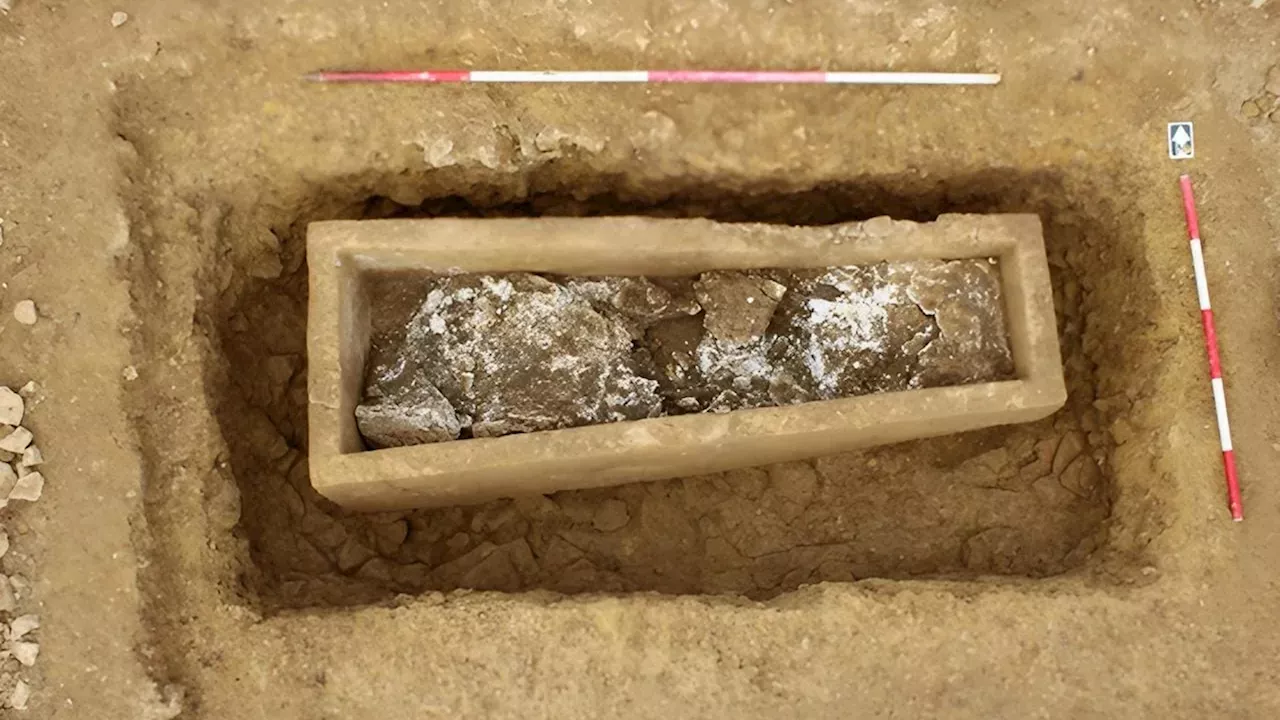 Ancient Roman Cemetery Found During Highway Construction in EnglandConstruction workers in England unearthed a Roman cemetery dating back 1,500 years while expanding a section of road. One particularly heavy stone coffin, weighing as much as a polar bear, was discovered.
Ancient Roman Cemetery Found During Highway Construction in EnglandConstruction workers in England unearthed a Roman cemetery dating back 1,500 years while expanding a section of road. One particularly heavy stone coffin, weighing as much as a polar bear, was discovered.
Read more »
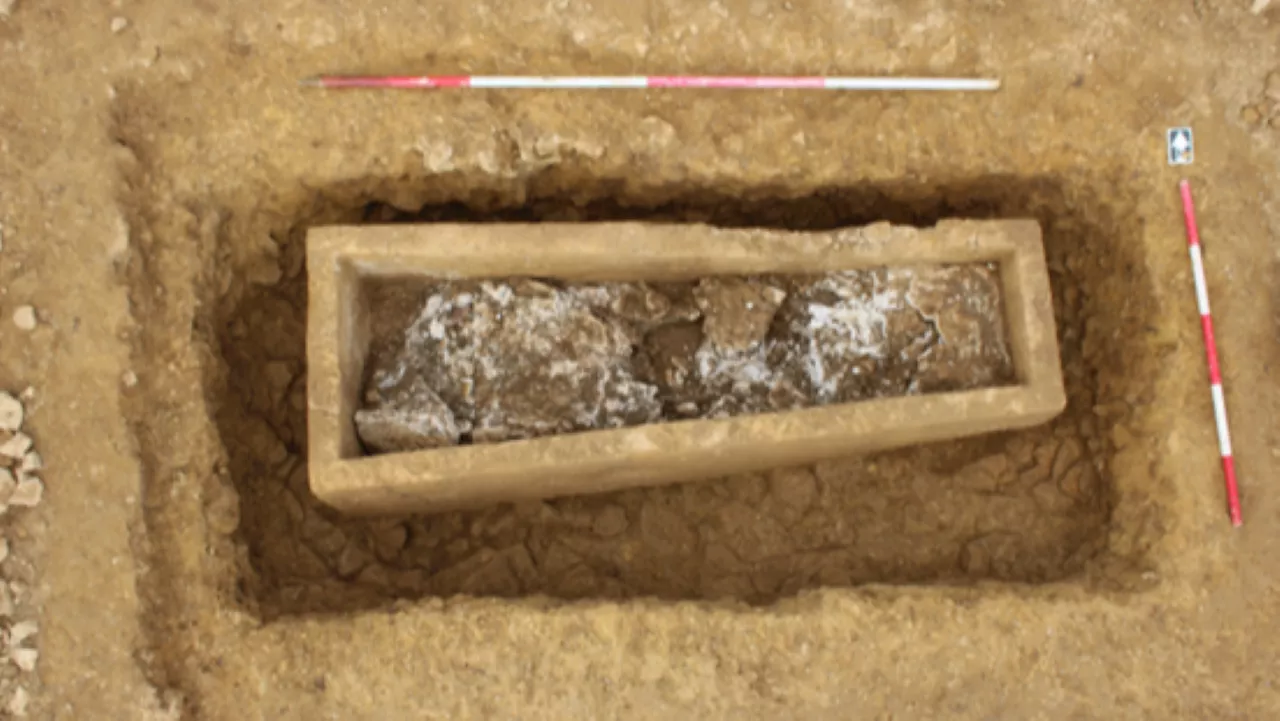 Ancient Roman Cemetery Discovered During Highway Construction in EnglandA recent highway construction project in England unearthed an ancient Roman cemetery, including a unique stone coffin filled with gypsum, offering insights into Roman burial customs and social practices.
Ancient Roman Cemetery Discovered During Highway Construction in EnglandA recent highway construction project in England unearthed an ancient Roman cemetery, including a unique stone coffin filled with gypsum, offering insights into Roman burial customs and social practices.
Read more »
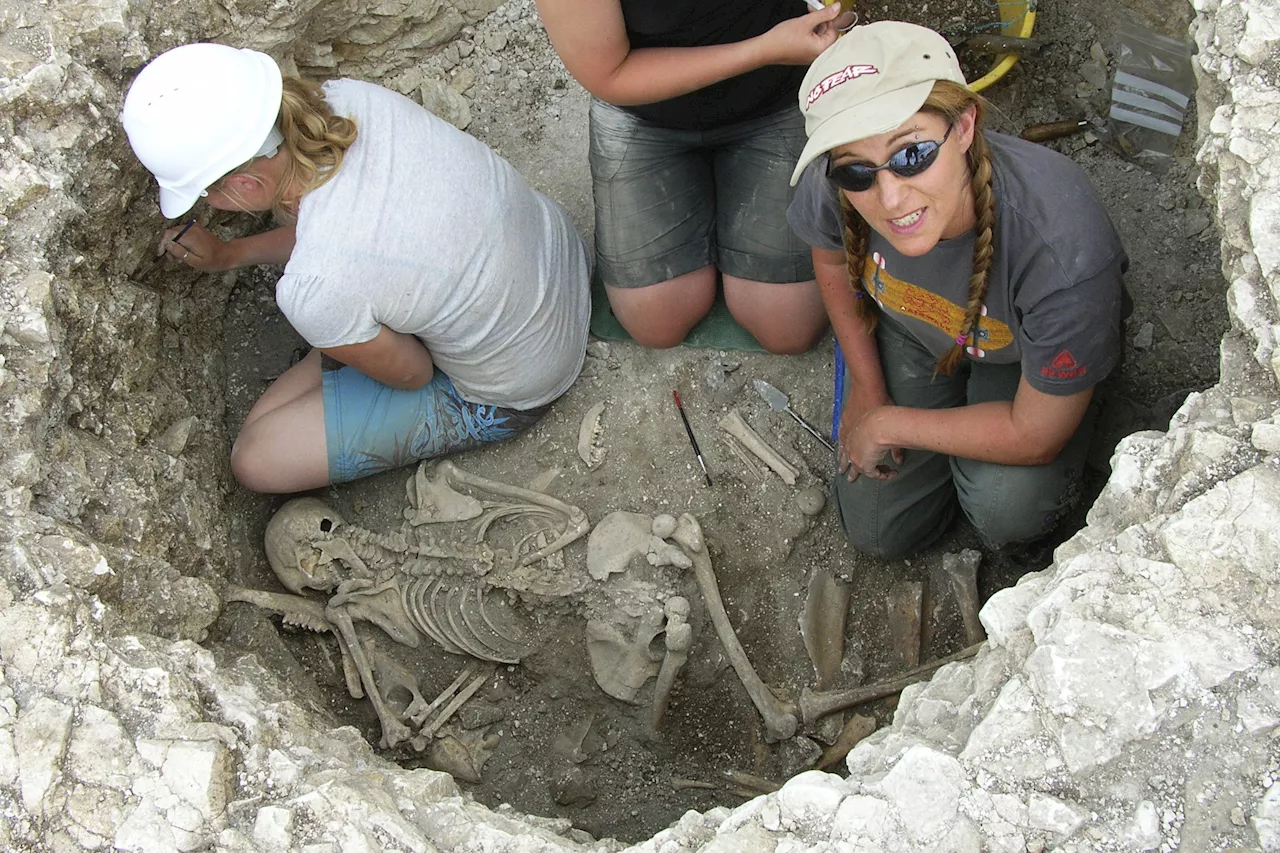 Ancient DNA Reveals Women Central to Celtic Britain's Social NetworksNew genetic evidence suggests that female family ties were central to social structures in pre-Roman Britain.
Ancient DNA Reveals Women Central to Celtic Britain's Social NetworksNew genetic evidence suggests that female family ties were central to social structures in pre-Roman Britain.
Read more »
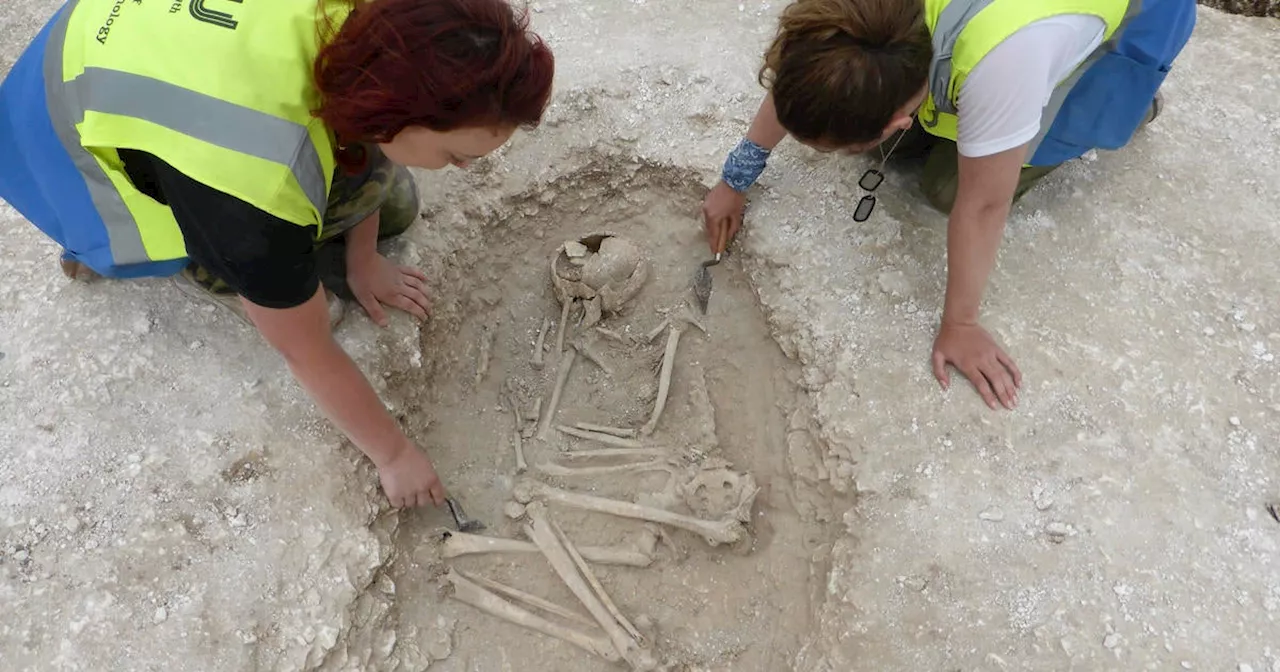 Ancient DNA from graves reveals 'jaw-dropping' discovery about Iron Age women in U.K., scientists sayScientists analyzing 2,000-year-old DNA have revealed that a Celtic society in the southern U.K. during the Iron Age was centered around women, a study said.
Ancient DNA from graves reveals 'jaw-dropping' discovery about Iron Age women in U.K., scientists sayScientists analyzing 2,000-year-old DNA have revealed that a Celtic society in the southern U.K. during the Iron Age was centered around women, a study said.
Read more »
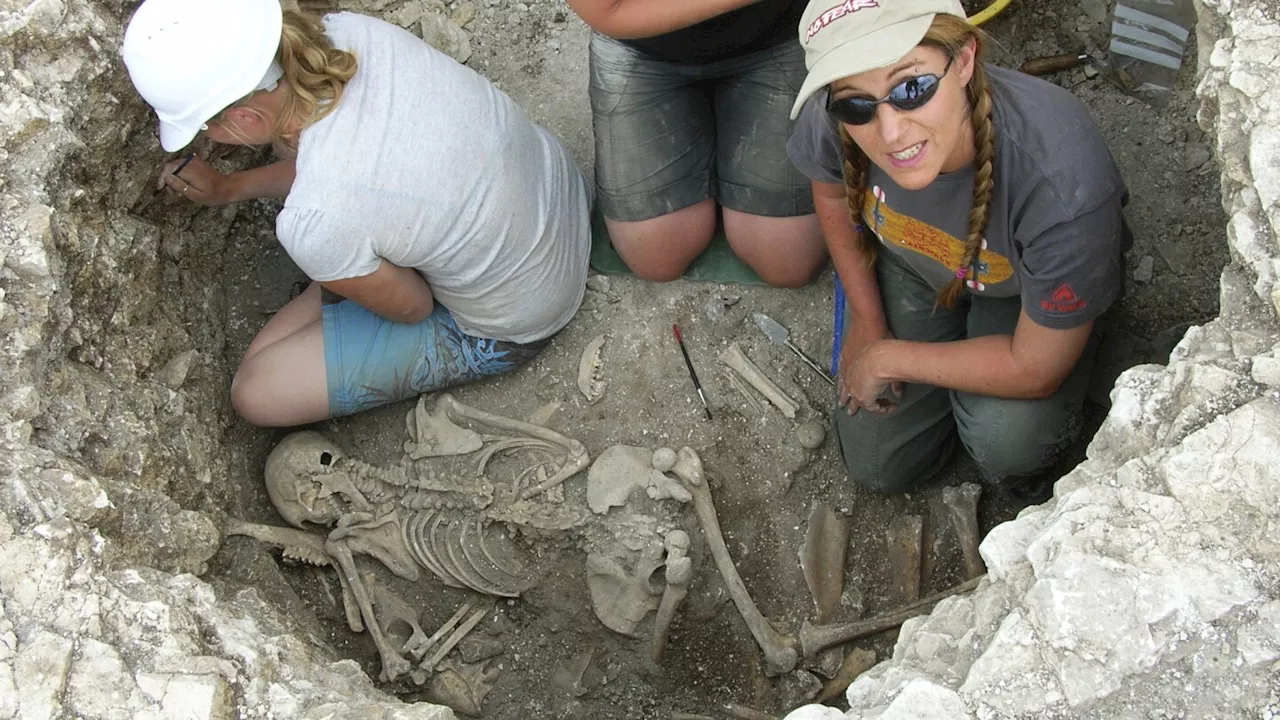 Ancient DNA Reveals Women's Central Role in Celtic Social NetworksA study of Iron Age Celtic cemetery in Dorset, England, using ancient DNA analysis has shown that women held significant social and economic influence within Celtic society.
Ancient DNA Reveals Women's Central Role in Celtic Social NetworksA study of Iron Age Celtic cemetery in Dorset, England, using ancient DNA analysis has shown that women held significant social and economic influence within Celtic society.
Read more »
